The sad lives of Brisbane’s 45,000 hoarders
Metre-deep animal faeces, dead birds in the freezer and baby wipe containers filled with urine. We see inside some of the horror hoarder homes in Brisbane, as the council receives a staggering number of reports for help.
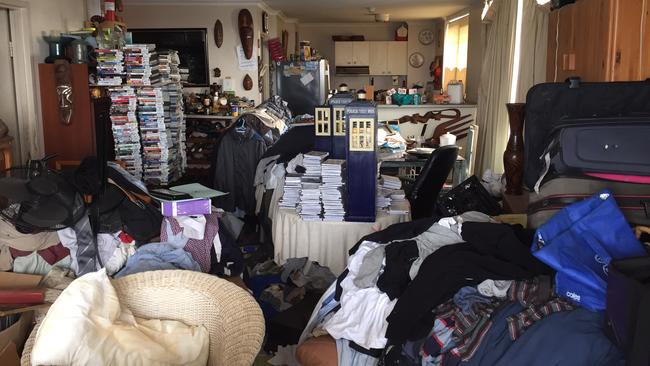
QLD News
Don't miss out on the headlines from QLD News. Followed categories will be added to My News.
IT costs hundreds of thousands of dollars every year and teams of specialist cleaners to fix up southeast Queensland’s most squalid homes.
But with an estimated 6 per cent of people suffering from some level of hoarding, many of them so bad they are living in squalor, councils and care groups can only deal with the very worst.
And the most difficult and time-consuming part of the job is not the cleaning.
Those called in to do the dirty work say most cases involve mental health or other problems which require patience, compassion and a response which allows hoarders to maintain their dignity — and hopefully control their behaviour.
Martijn Van Lith, whose specialist cleaning company works with the RSPCA, councils and not-for-profits, said he believed people suffering from hoarding did not deliberately try to ruin a property.
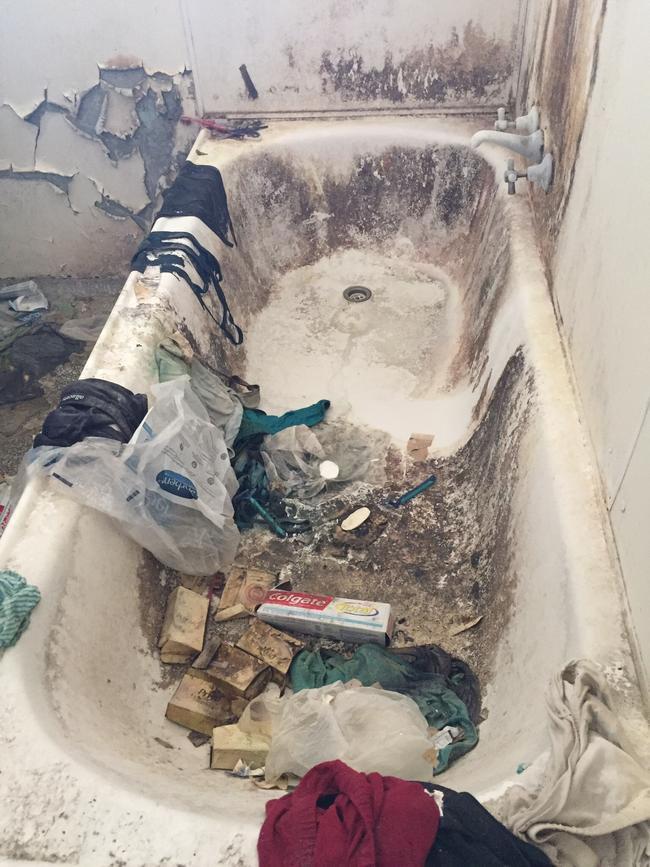
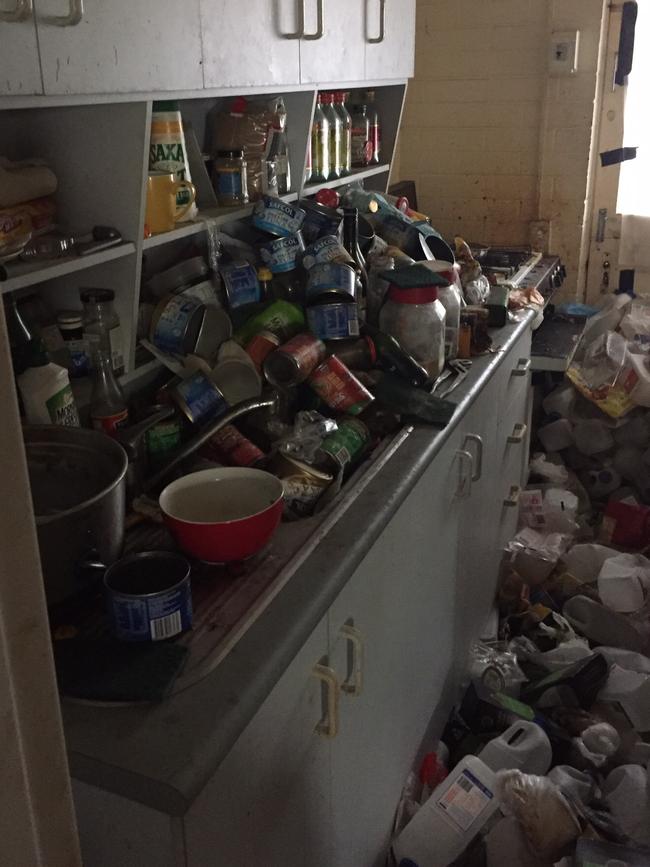
“They need help and sometimes because of the public stigma around hoarding and squalor they are too scared to ask, or too shy or too embarrassed, or they don’t know where to start or to ask for help,’’ he said.
“Trashed properties are very different cases. They are ruined by those who have no respect for another person’s property, and do it for a thrill.’’
One recent job took him to a sought-after part of Taringa where the neighbouring houses sell for more than $1 million.
Mr Van Lith took The Courier-Mail on a tour of that house, which from the outside was rundown but not noticeably squalid. Inside, the filth and clutter was extraordinary.
Huge holes had formed in the roof where termites had eaten away wooden beams, and asbestos sheets peeled off the walls.
Every room was so cluttered with junk it was hard to pick a path through the assortment of possessions, some piled up to the roof.
The freezer was black with grime and the toilet strewn with dozens of toilet paper cores.
The bedroom where a tenant, banned from owning pets by the RSPCA, once lived had 40 birds as well as rats and mice.
Feathers, faeces and bird food was ground into the carpet.
“Every job is different but we have had a 99.8 per cent success rate, to date, with over 14 years’ experience and have helped thousands of clients either directly, through NGOs, Queensland Health and others,’’ Mr Van Lith said.
He said one client he had helped worked at a well-known CBD accounting firm and another was a senior police officer.
Another’s problem started after they came home and found their mother dead downstairs, and then found their father had shot himself in an upstairs room.
Depression, post-traumatic stress disorder, dementia, anxiety or psychiatric illnesses were other common causes.

Often, once the clutter was advanced, people became overwhelmed and literally had no idea where to begin to clean it up.
He notified the Queensland Fire and Rescue Service of bad cases, so they had those properties on their records as a potential fire risk.
Sometimes hundreds of syringes or toxic chemicals were present.
Some of Mr Van Lith’s more memorable jobs have included:
Karalee - A very large squalor job, with 1-1.5m deep junk throughout which took seven people three weeks to remove. A building engineer then advised the team that they were lucky a storm had not hit during the operation, as the termite damage was so advanced the house would have collapsed around them.
Morningside - A three-bed deceased estate owned by a senior professional worker. There was an 80cm wide path between the junk, from the front door to the main bedroom, was covered in 5cm of compacted dog faeces. The kitchen, toilet and bathroom were inaccessible and baby wipe containers where used by the occupant to urinate and defecate in. Eight, 15cu m skips and one 8cu m skip of junk were removed from the property.
Loganlea - This property was used as an animal rescue shelter, but the animals were all inside including 10 dogs and 15 cats. His team had to replace their face mask filters twice a day due to the ammonia from animal faeces, which was piled one metre high across an entire bedroom. It took eight people 15 days to clean out. Children lived in the house.
“Unless it’s in someone’s yard, it is hidden away. A common theme when someone is affected by hoarding or squalor is that they tend to not allow anyone into their homes or property because they are embarrassed or worried someone may try to remove items,’’ Mr Van Lith said.
“As well as clean ups, I also do hoarding de-clutter programs where I work with the client over several weeks to assist them to de-clutter their own home at their own pace.
“In most cases people are scared to let go, so it takes us a few hours or few visits to build the relationship and trust.
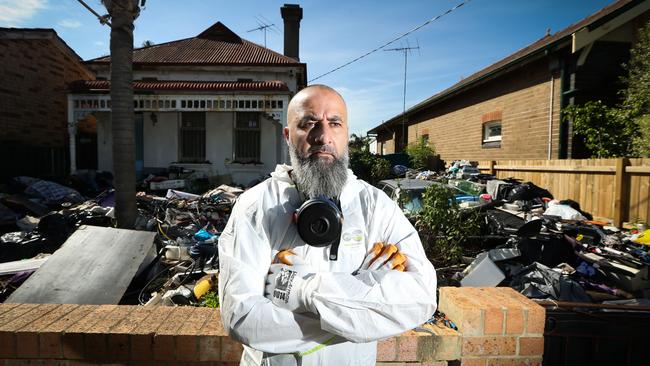
“I do this out of passion and love, as I really want to help people.’’
Centacare is one of the biggest not-for-profit agencies helping hoarders and people living in squalor.
“We’ve been doing this for 10 years and I’ve been involved for eight and a half years,’’ Centacare service delivery manager Lucy Nash said.
“There was a study by the Greater Brisbane Hoarding and Squalor Strategies Group which estimated 2-5 per cent of the population are living in hoarded environments.
“In Brisbane alone, that equates to more than 45,000 people.
“We work with Brisbane City Council, the Department of Child Safety and police.
“Sometimes we work directly with the person, or sometimes through referrals, or there can be a public health order — in which case the person is given no choice but to co-operate.’’
Centacare has eight support workers and two trucks and are booked one to two months in advance.
“We always work with participants on what is best for them. We ask them something like ‘how would you feel if four people came on this day and took some of your stuff?’
“At the end of the day, it’s their environment and it’s important we are patient.’’
Before COVID-19 forced them to temporarily close, Centacare ran regular Buried in Treasures workshops, which are based on a program developed by Dr Randy Frost.
Centacare said it looked forward to restarting the program when appropriate restrictions were lifted.
“It’s spread over 20 weeks. There’s homework and people come back and report on the progress they’ve made,’’ Ms Nash said.
“The response is phenomenal. You have a lot of people in one room who are all excruciatingly isolated and for the first time they are meeting 20 other people just like themselves.
“It’s such a relief to them to realise they’re not the only ones. They will often break down and cry.’’
Pet hoarding heartache
Hoarding and squalor often involve animals and dealing with the problem is one of the RSPCA’s most time consuming and expensive roles.
Prosecutions officer Tracy Jackson said there were three types of people they encountered.
Overwhelmed carers were the easiest to deal with.

They basically could not say no to looking after yet another native or rescued animal.
“We can work with them. It’s very important to leave them with some animals because they are often replacing a void in their lives,’’ Ms Jackson said.
“Hoarder/breeders can sometimes also be helped, but often we need to seek prosecution.
“There may be some financial gain involved, but usually that is so they obtain more animals.’’
At the other end of the spectrum were what she called exploitative hoarders, usually breeders.
They had no respect for authority, were prone to conspiracy theories and believed they were being persecuted.
Ms Jackson said the “big three’’ had cost the RSPCA millions and years in court action.
Wondai dog breeder Ruth Schloss, had 280 dogs on her squalid property.
Eventually the Department of Agriculture and Fisheries prosecuted her, in 2009.
Megan Hajridin and Fred Dart, who lived in a 12m by 8m shed with 115 dogs, 1000 rats and mice and also some birds, ended up being bankrupted after appealing their prosecution to the District and Supreme courts.
They even tried to seek leave to appeal in the High Court in a series of cases that took almost a decade to finalise.

The last of the “big three’’, Geraldine Robertson, was prosecuted after being found with 105 poodles in shocking conditions.
“Our legal costs in that matter were about $1 million. We had to care for her poodles for two years before she was eventually declared mentally unfit to stand trial, and later died.
“As a result of these sort of cases we’re currently pushing for legislative change so defendants have to pay an amount for care of their animals while cases are ongoing.
“At the moment it hits us both ways, as we have to pay these costs and the (defendant) then has cash freed up which they can use to fight us in the courts.’’
Hoarders rarely speak out, but several years ago self-confessed hoarder Jessie Harlow opened up to Westside News about the problem even she admitted was an awful way to live.
“Things are horrible. You can’t even walk in our loungeroom. We have to sit on the stairs to eat,” she said at the time.
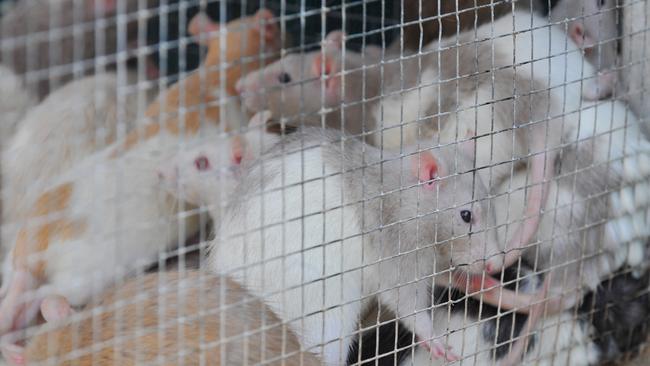
The unit she was sharing with her two adult children and three cats was so crowded they gave up trying to get to a landline phone because it rang out before they could answer.
The family had broken toes and skinned shins after piles of books and bags fell on them.
Ms Harlow – who suffered severe trauma in childhood and early adulthood – said hoarding had been a way for her to self-nurture.
“For me it’s a way of keeping people away. If they can’t see me, I can hide and I’m safe.”
Brisbane City Council has a dedicated team acting on complaints, proactively identifying properties and enforcing compliance.
“Council’s first step will always be to encourage residents to clean up their properties voluntarily, however if this fails Council will take action with enforcement notices and fines,’’ a spokeswoman said.
“In 2019-20, to date, Council’s Hoarding and Squalor Reduction Initiative has helped 31 residents, with 15 of them new cases.
“Brisbane is the only Council in Australia to run a program of this nature and has always solely managed this program since it was introduced in 2014.
“Prior to this, Council managed hoarding from a traditional compliance perspective.
“Communify was as an active member from 2013 to 2016 of the voluntary Greater Brisbane Hoarding and Squalor Group, which is chaired and facilitated by Brisbane City Council.
“Council funds its Hoarding and Squalor Reduction Initiative independently, but greatly appreciates the monthly collaboration of agencies as part of the Greater Brisbane Hoarding and Squalor Group.’’
This year’s Council Budget has set aside $198,000 to the Hoarding and Squalor Reduction Initiative.
The number of complaints about hoarding and squalor is staggering, with more than 19,000 complaints to Brisbane City Council in the three years to 2018, for instance.
In that period alone it issued more than 100 public health orders to property owners in 24 suburbs.
A public health order, under the Public Health Act 2005, allows for either a local council or state government to require the recipient of the order to take action to remove, reduce, control or prevent a risk to public health from a public health risk, such as hoarding and squalor.
If the person does not comply with the order they can be fined more than $15,000.
NOTABLE HOARDER HOUSES
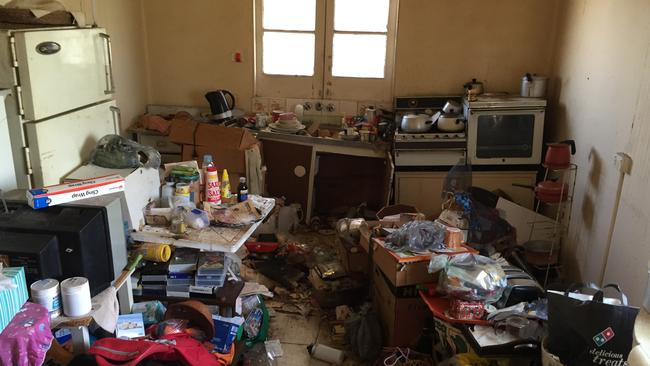
38 Plunkett St, Paddington
Known just as “the hoarder house”, it sold for $858,000 (rubbish included) in 2015 despite being so foul the stench did not go away until the building’s skin was removed.
“I was shocked when I first walked inside – I could barely get through the door with all the rubbish in the way,” builder Rob Gray said.
“And the smell was unbearable. The smell lingered for about the first two months, but after we got the skin of the place out it disappeared that same day – it was a lot better to work in after that.”
He said the hardest part of renovating the property was the sheer amount of rubbish that needed to be removed.
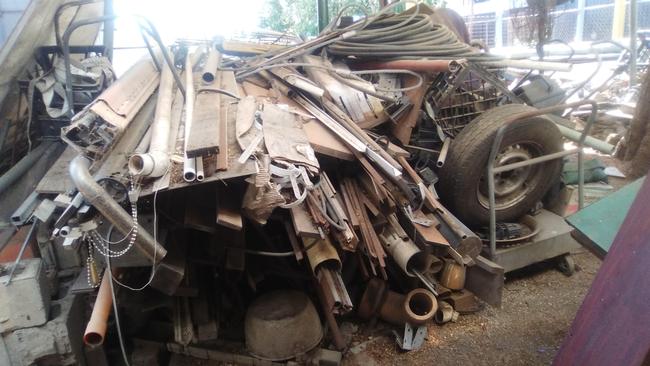
140 Annie St, New Farm
This house also sold for a tidy sum, in October last year, after being cleared of 100 cu m of junk.
Belle Property auctioneer Paul Liddy said it took four or five people about 10 days to remove all the material.
“I’ve only seen a handful of hoarder homes in my career, and this is the first that has blown me away with the gold we have uncovered underneath all the junk,” he said.

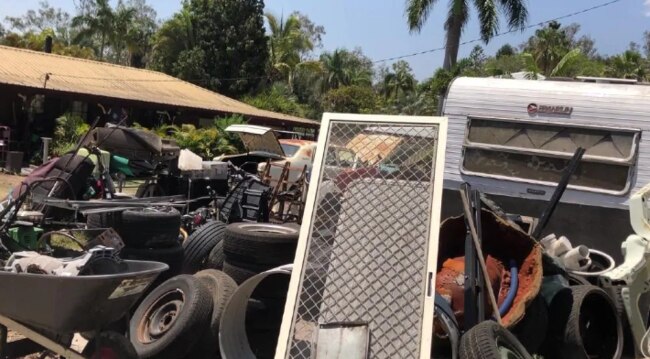
Boronia Heights
Logan resident Dan Weston, 38, was fined $9000 last November for keeping more than 115 cars in his 4000sq m garden.
The former housing and public works officer was found guilty of using his semirural block for car repairs and storing parts in two sheds and two shipping containers.
Beenleigh Magistrates Court also ordered Mr Weston to get rid of all the cars, clean up his garden, and remove the two shipping containers.
The ruling followed a two-year campaign by Logan City Council to tidy up the property.
WHERE TO GET HELP
Centacare 1300 236 822
Richmond Fellowship Queensland, Annerley 3363 2555 (https://www.rfq.com.au;
info@rfq.com.au)
Open Minds, Taringa, Logan, Ipswich, Redcliffe, Morayfield, Capalaba 1300 673 664 (https://www.openminds.org.au
Footprints in Brisbane Inc, Valley, Brendale, West End, Kingston, New Farm
3252 3488 (https://footprintsinc.org.au; admin@footprintsinc.org.au)
Originally published as The sad lives of Brisbane’s 45,000 hoarders



